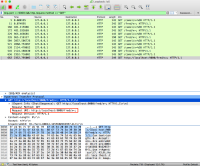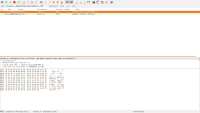-
Bug
-
Resolution: Done
-
Major
-
jboss-fuse-6.2
-
%
-
-
-
6.3 Sprint 3 (Feb 29 - Mar 25)
A Camel application routes HTTP requests between HTTP clients and servers using rules that are defined programatically. netty-http endpoints are used to consume and produce the requests, using endpoint bridging. The HTTP URI supplied by the client may be encoded in the usual way, to protect characters that have a particular meaning in a URI.
We observe, however, that when an encoded URI is supplied by an HTTP client, the request that is routed to the receiver has its URI decoded, which causes a parsing failure.
So, for example, if the client requests http://host1:port1/x=%3B then request received by the downstream HTTP server is http://host2:port2/x=; The presence of the un-encoded semicolon here breaks the URI parsing used by the client, because it was expecting to see "%3B" at this point.
This behaviour is different from that observed with Jetty endpoints, which pass the URI without interpretation when bridging endpoints. However, the use of Jetty endpoints is not a workaround, because they lack certain features required by the application (partial URI matching, for example).
- relates to
-
CAMEL-9442 Loading...
-
CAMEL-9640 Loading...
-
CAMEL-9658 Loading...
-
CAMEL-9660 Loading...

